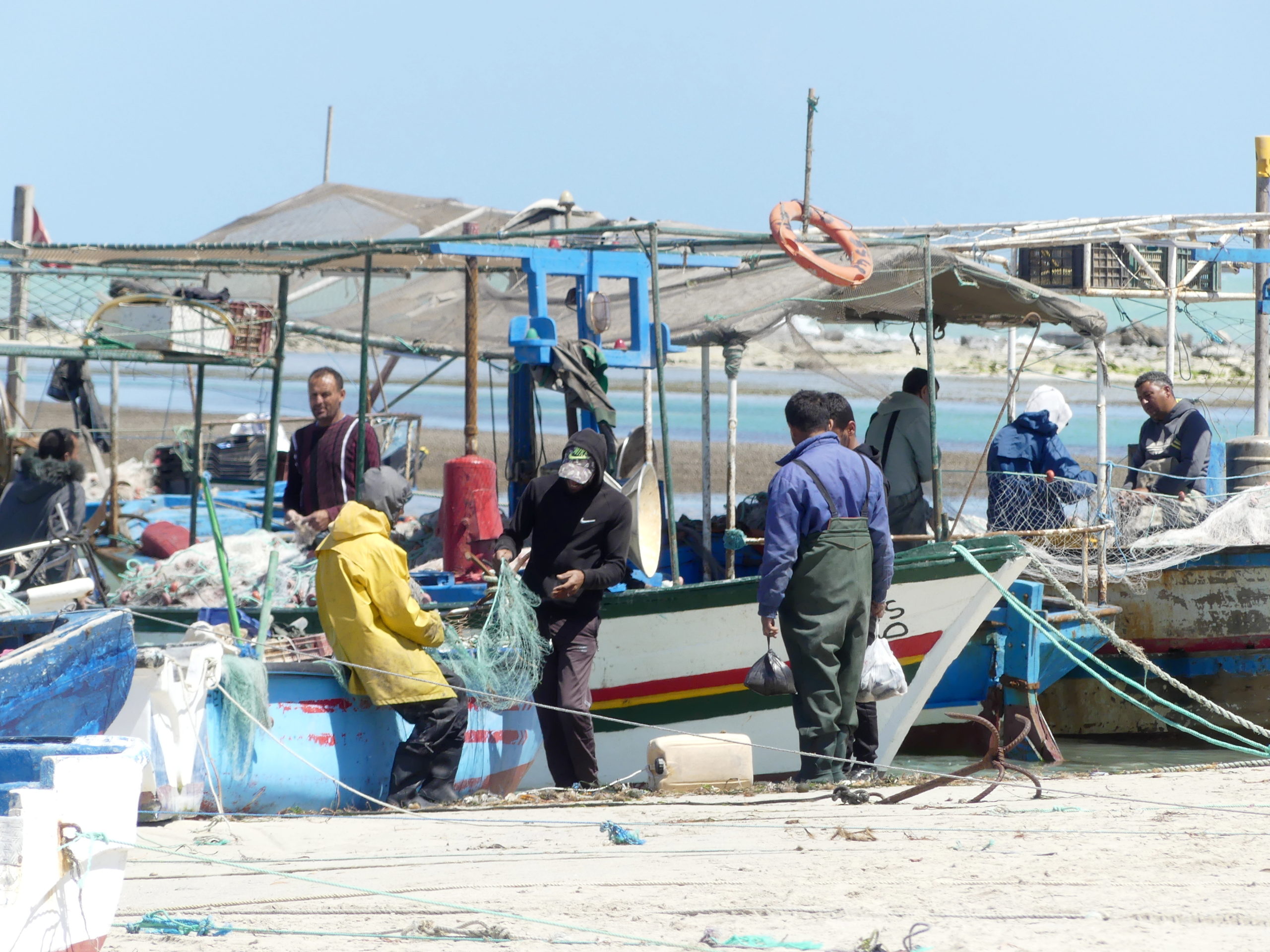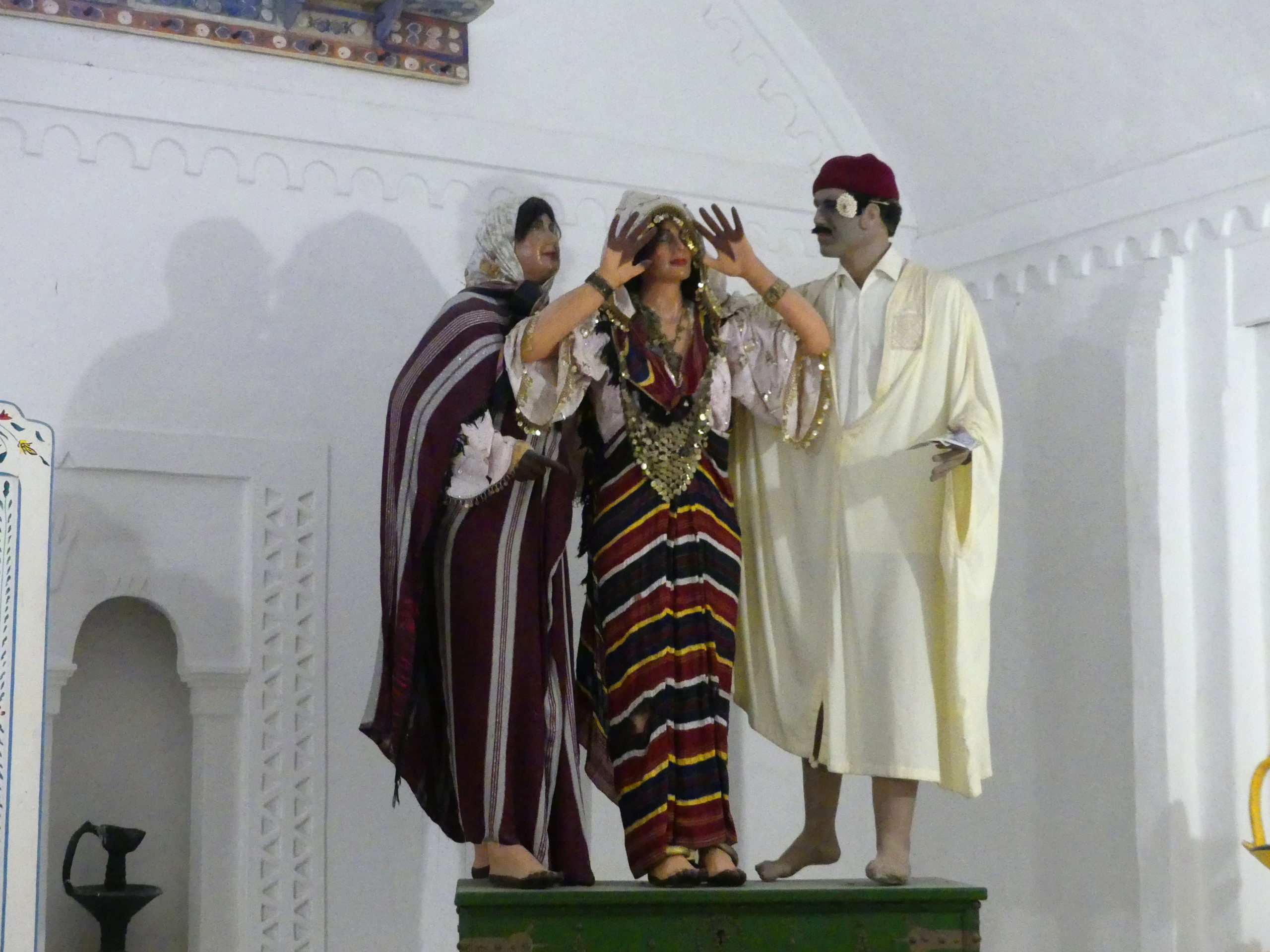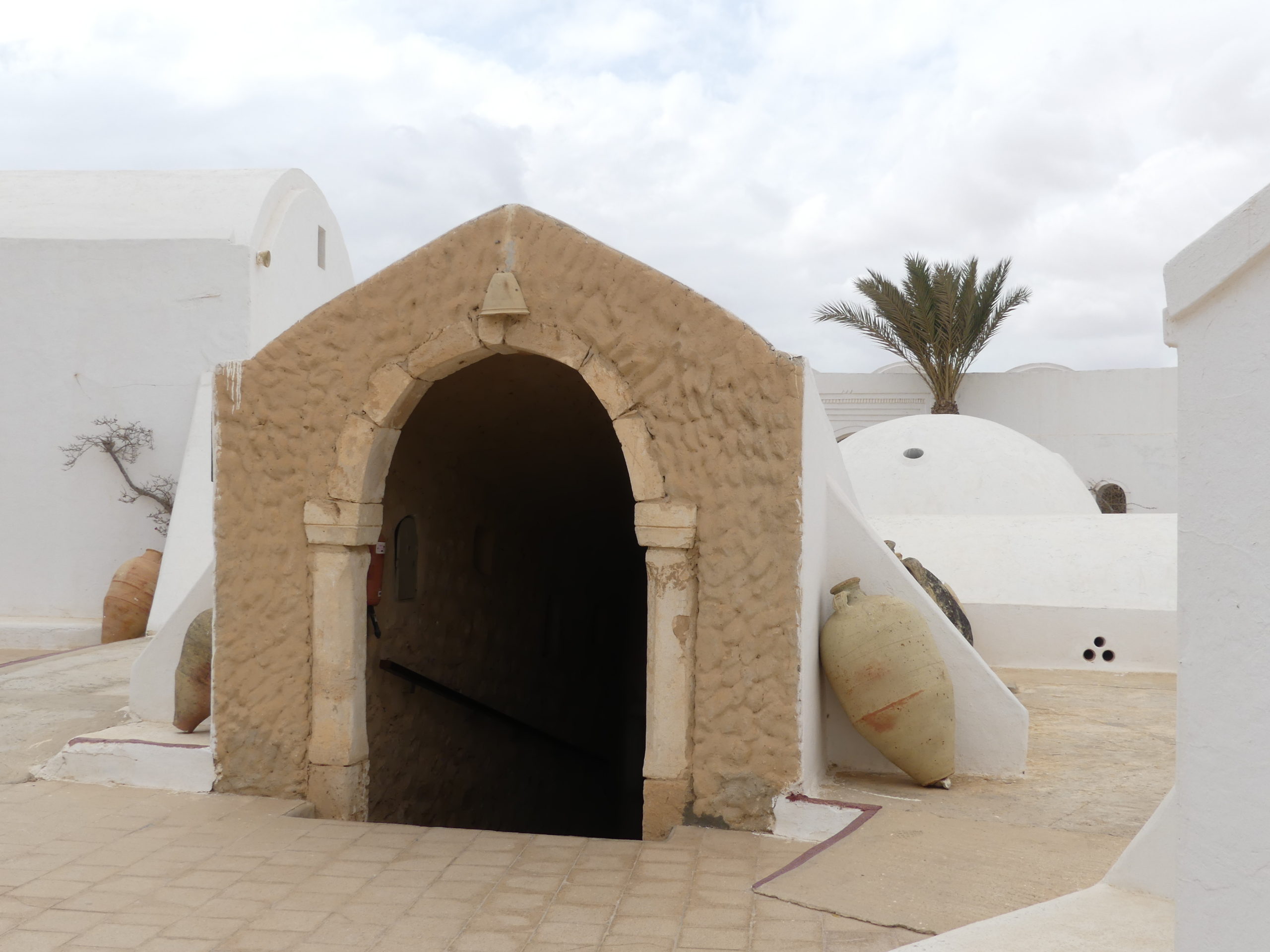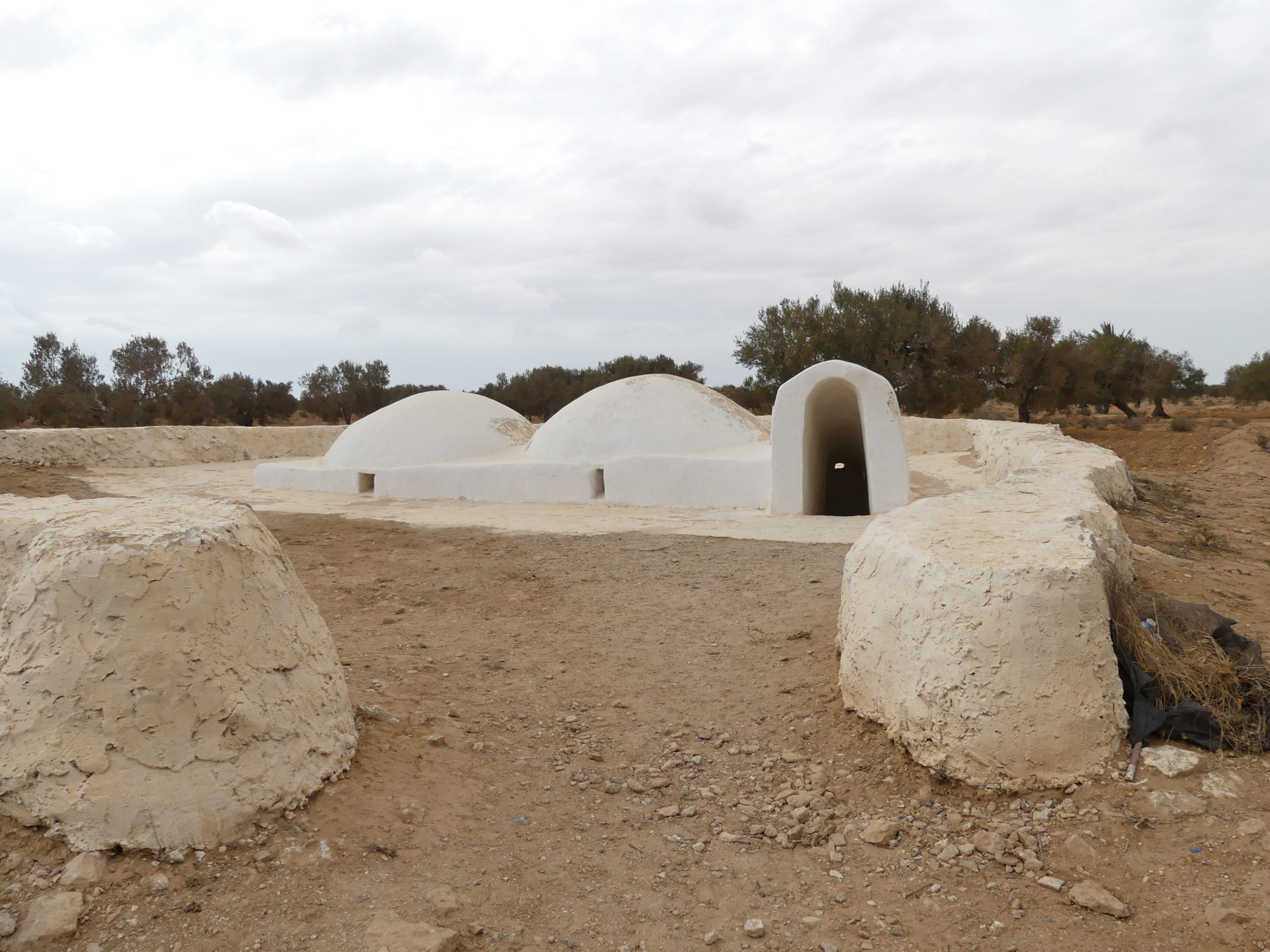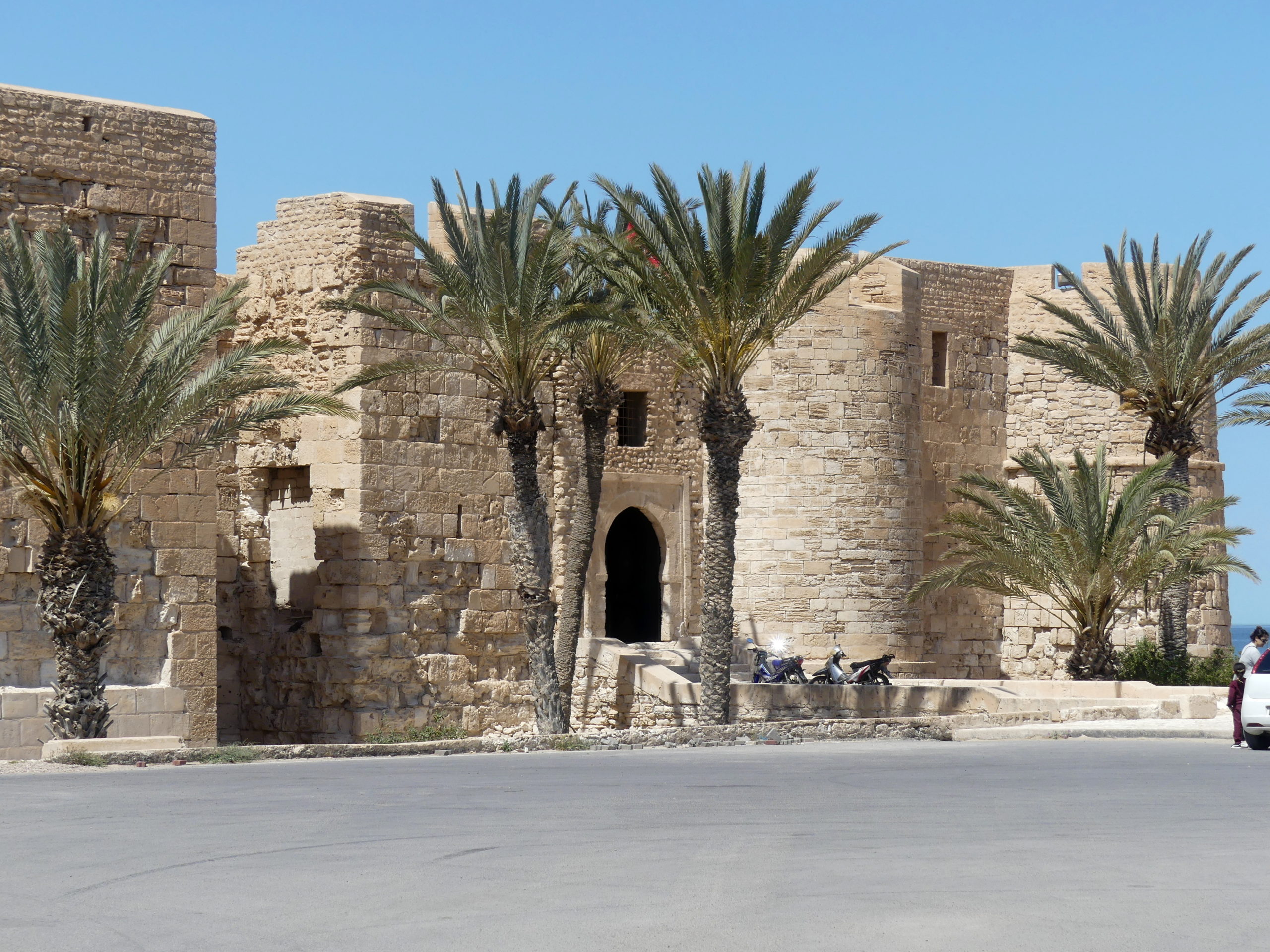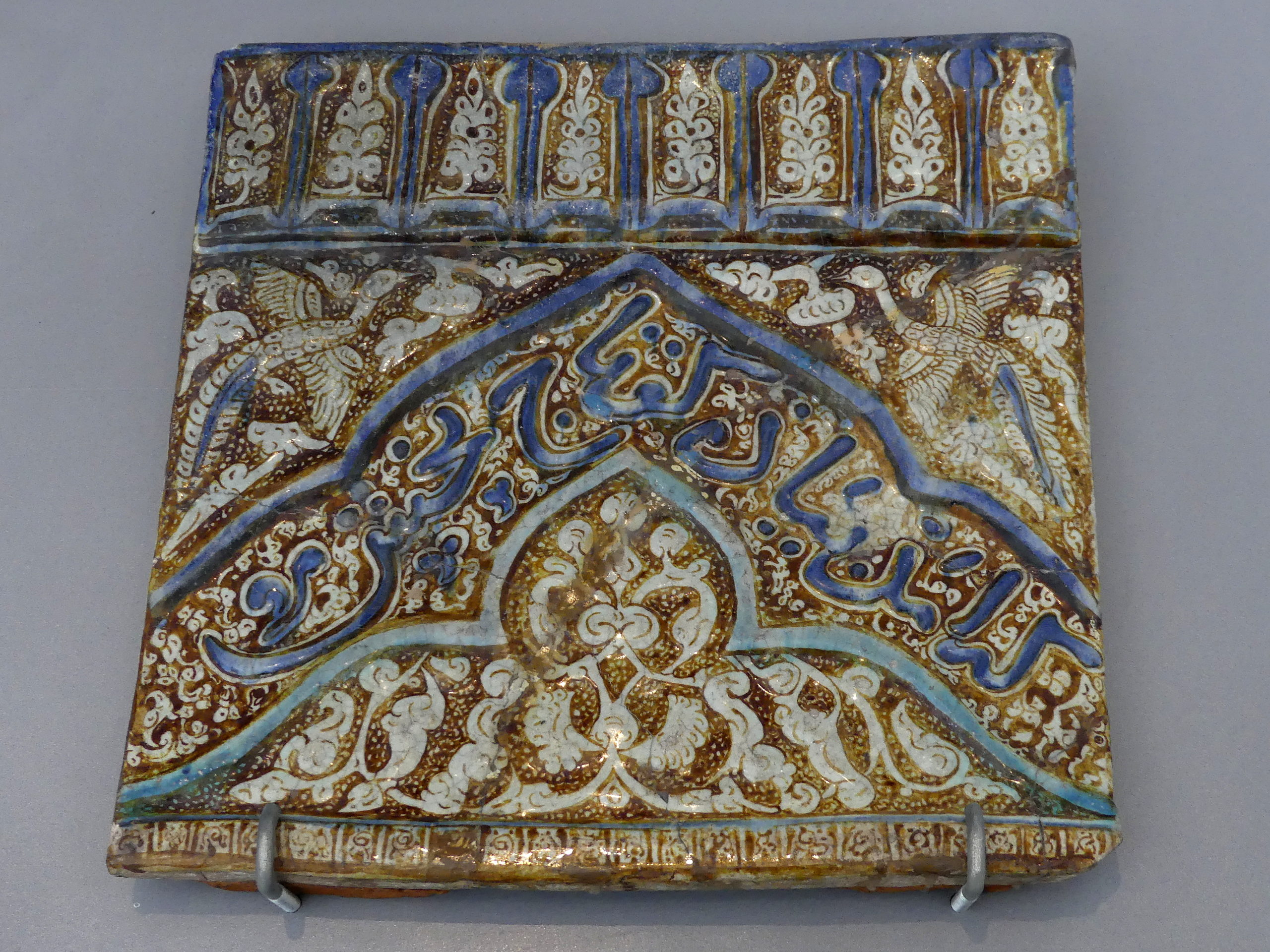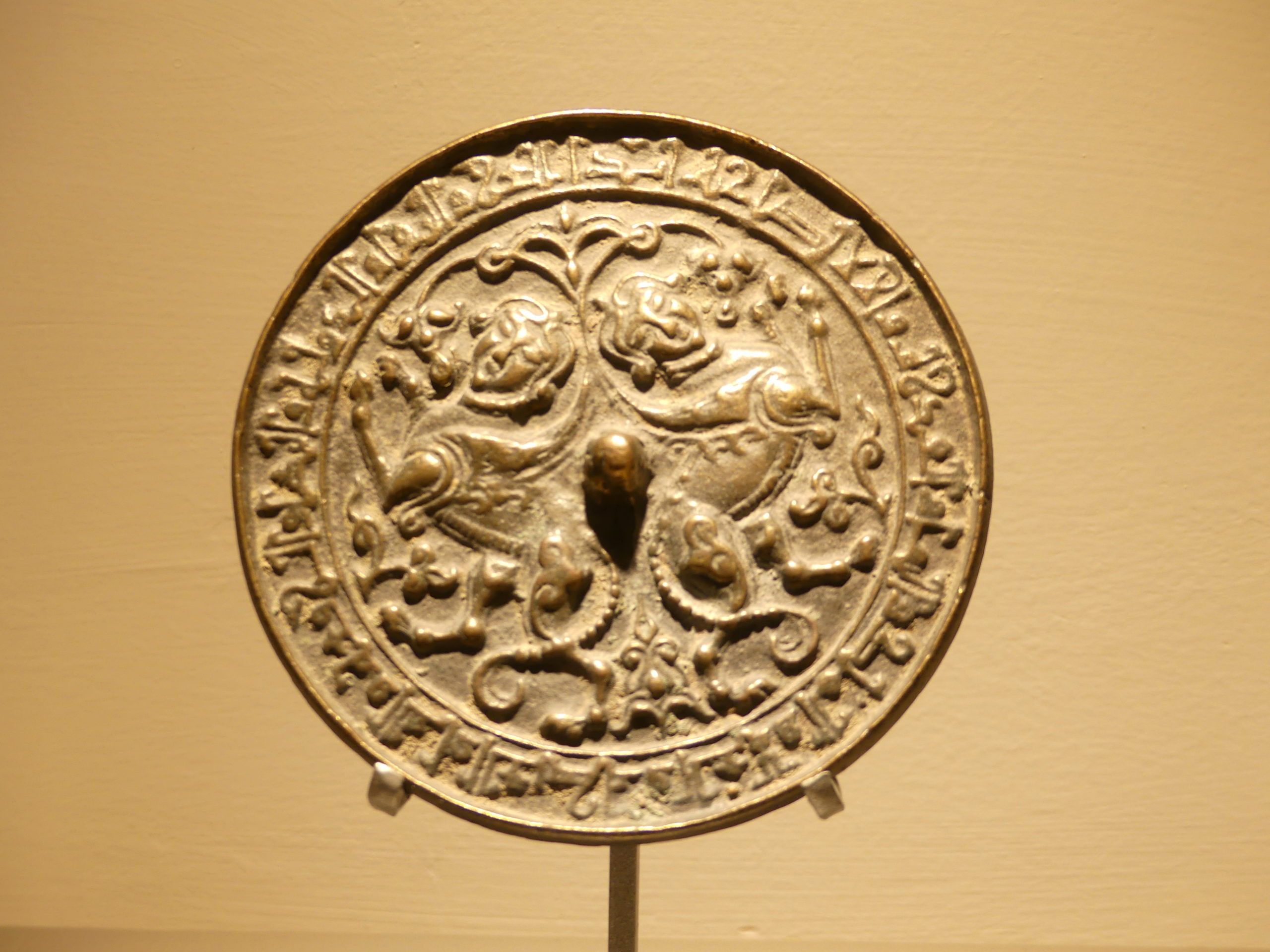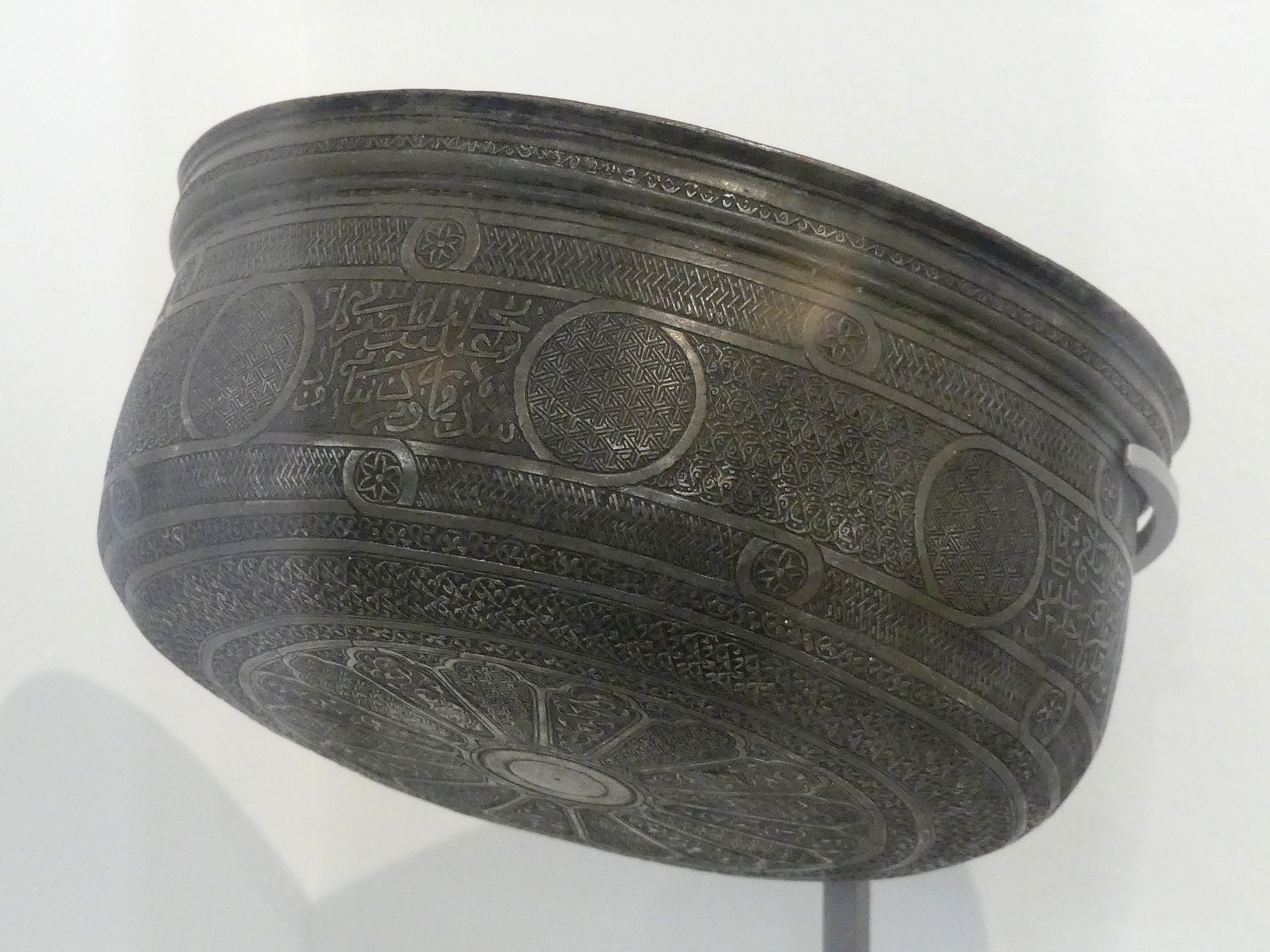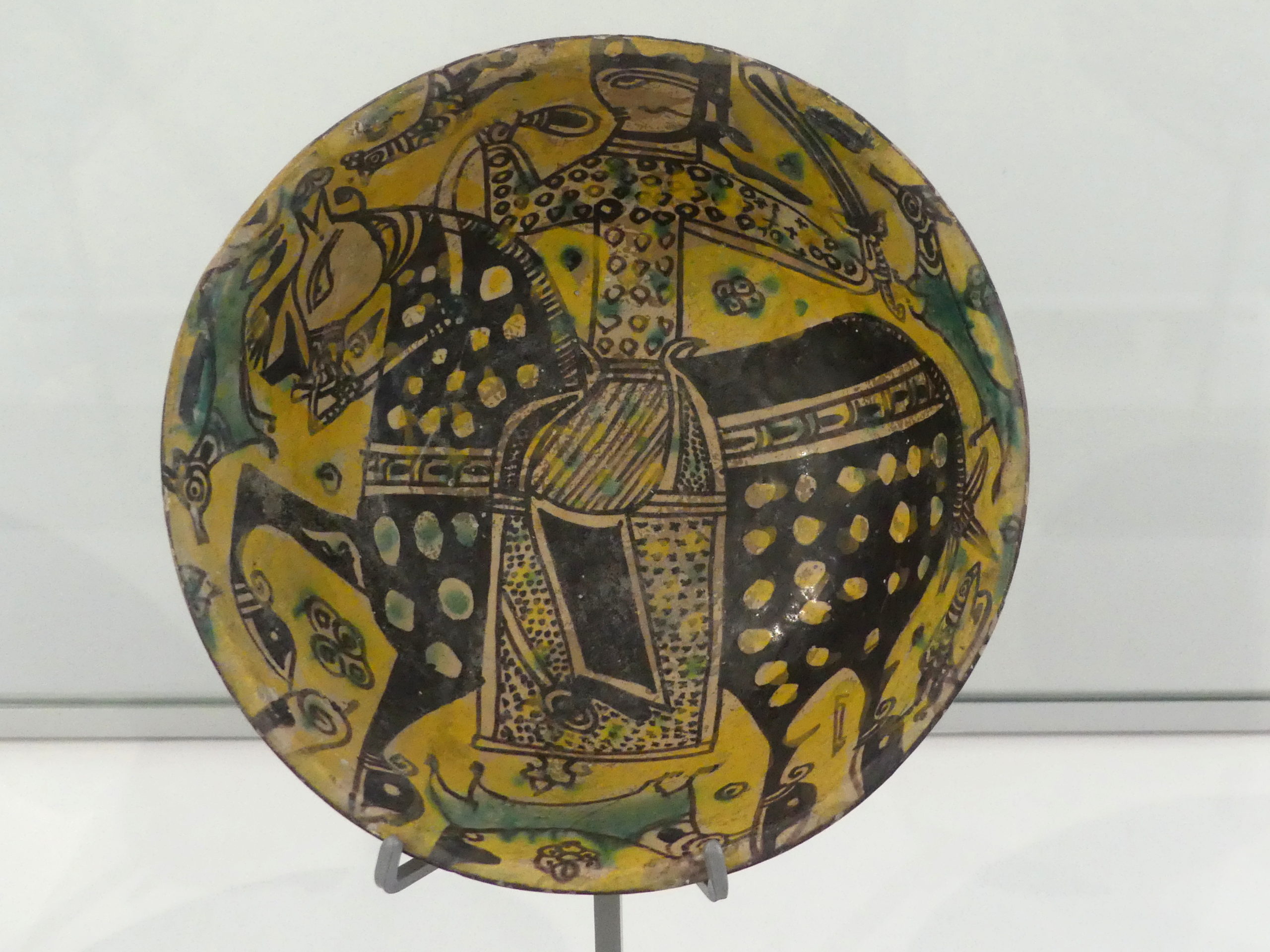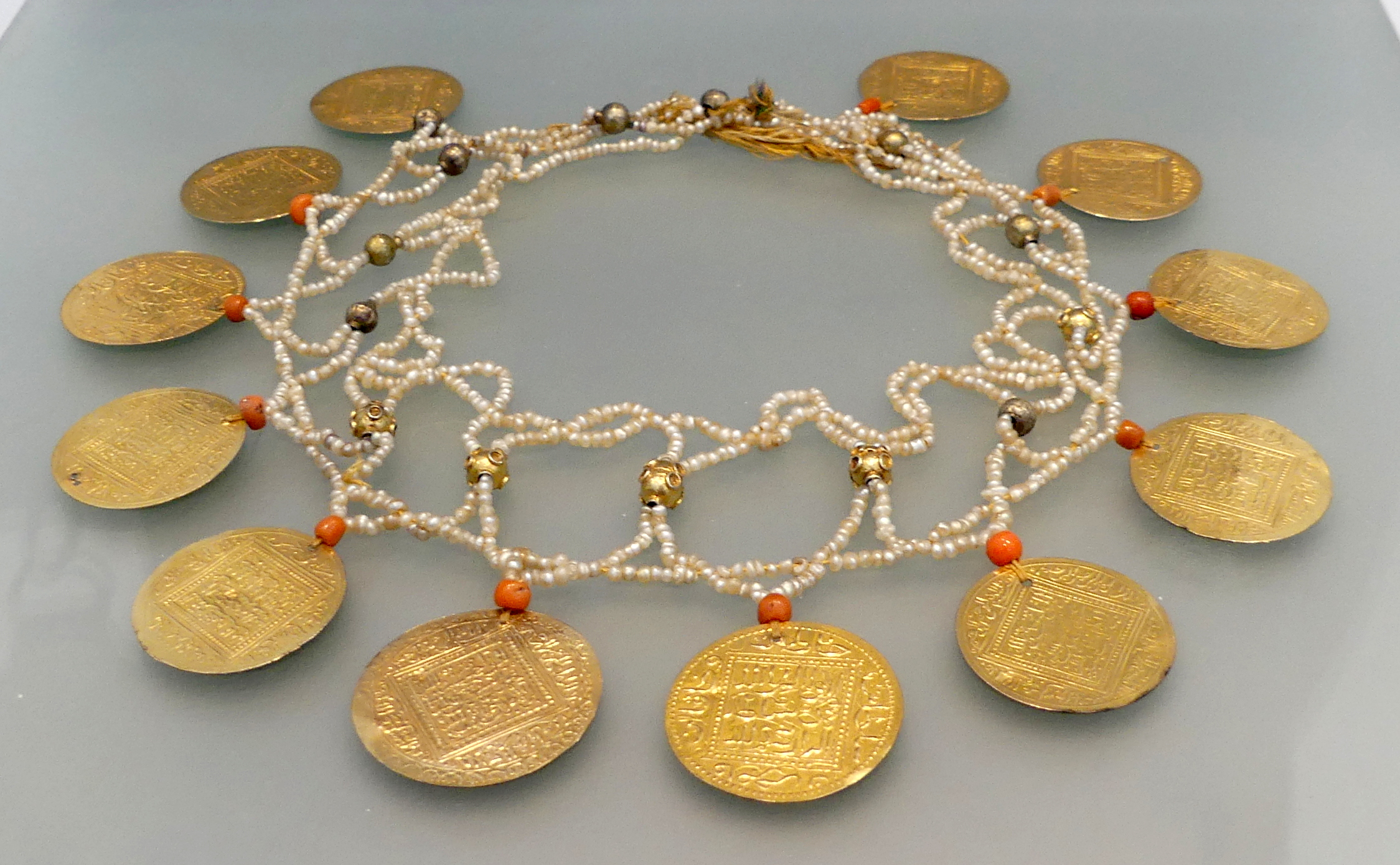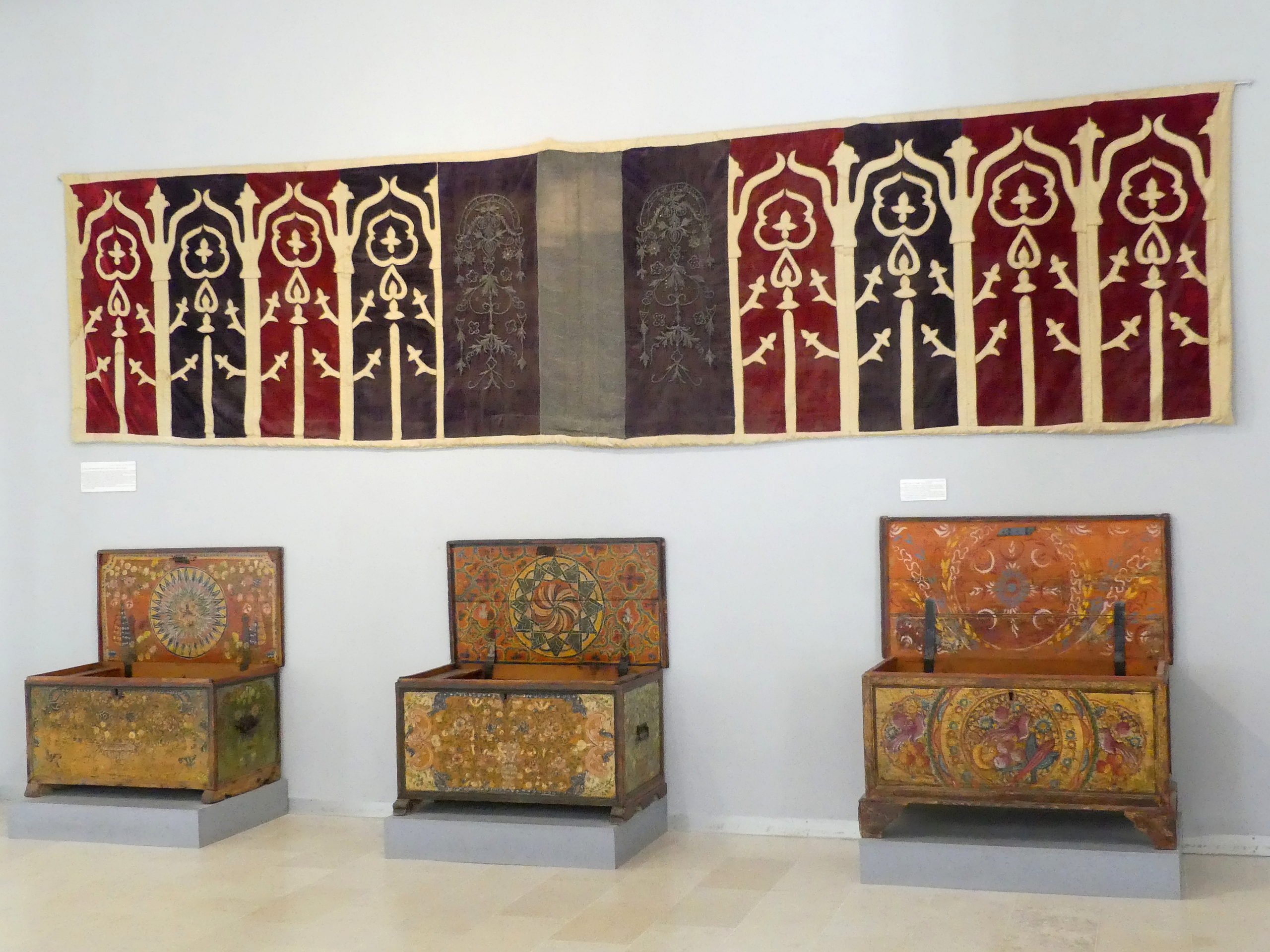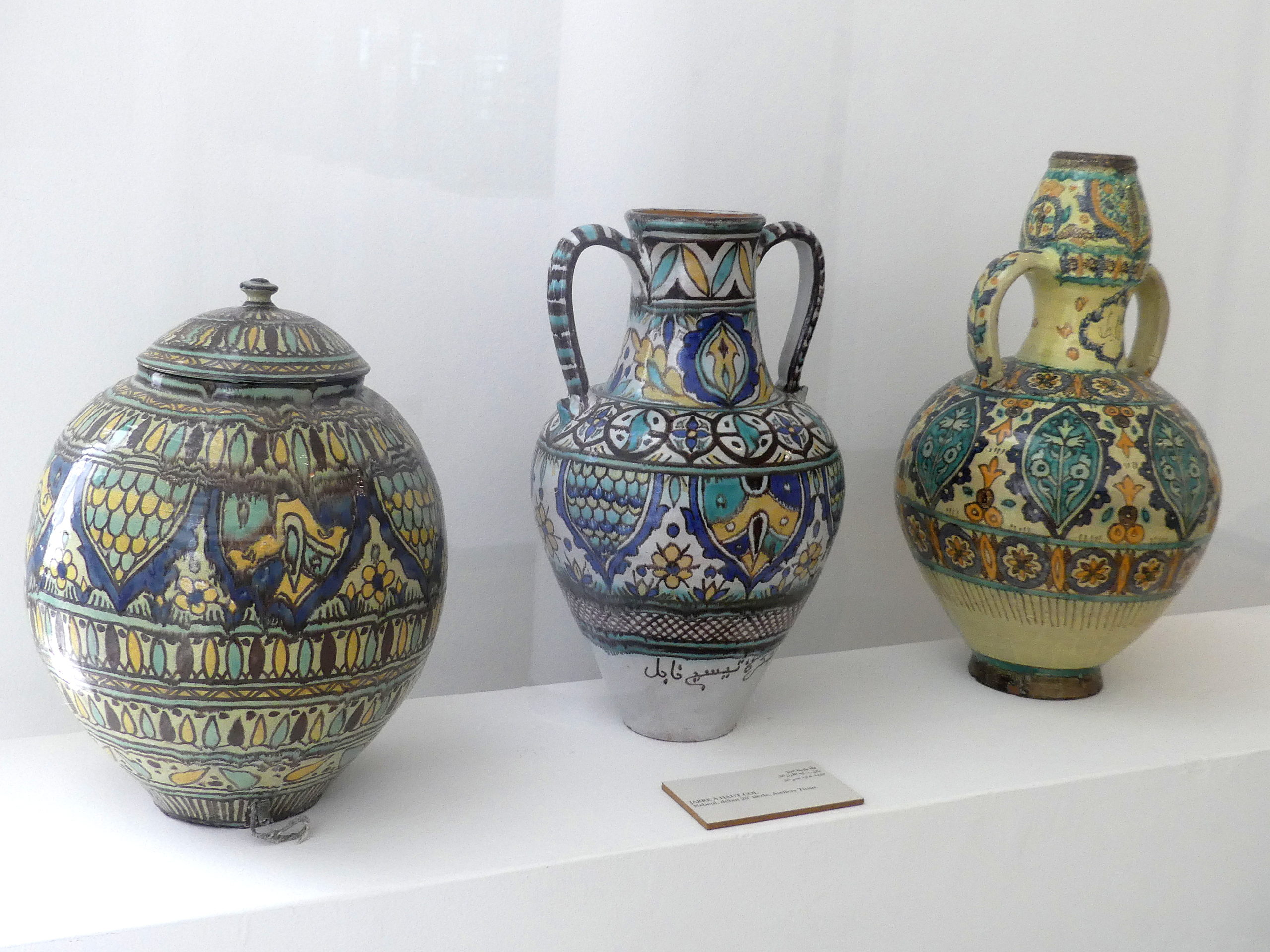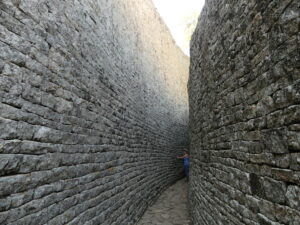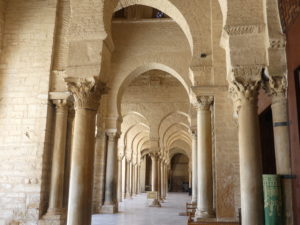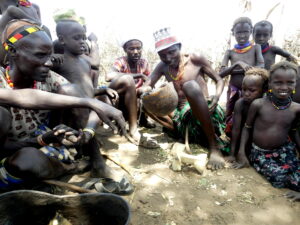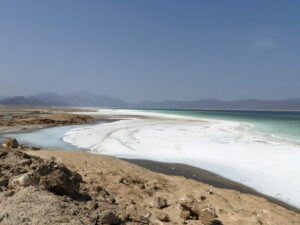In brief: Djerba Island packs quite an exciting history and an engaging present within its shores.
In classical legend, Djerba Island – just a few kilometers off the Tunisian coast – was the home of the lotus eaters. Their food had narcotic effects that induced languor and indifference to responsibility.
OK, we got it; we often felt like idling during our four day stay. Certainly Djerba’s many beaches and lagoons entice people to lay about.
But there are many other attractions: the history, the natural beauty, the arts, the textile and pottery crafts. Over the centuries, more industrious foreigners came to exploit its isolation from the coast, its trade opportunities just a short distance from Italy, or its abundance of olives and fish. Jews came from Spain after their 15th century expulsion and built a huge community over the next 500 years. The French still come to their former protectorate so they can speak the same language. Our original plan was a quick stay here, but we found Djerba quite…stimulating.
No lotus eaters here. With abundant waters surrounding the island, fishing has long been a source of income and food. These men are mending nets and preparing for the next day’s fishing while their boats rest on the sands of a large lagoon during low tide.
The museum at Guellala features an extensive display of marriage ceremonies and customs using mannequins like these, set within authentically furnished rooms. It might seem cheesy, but we learned quite a bit about Djerba rituals this way. This display demonstrates the second phase of the wedding, beginning on the fifth day.
After hiding before the wedding in various ways including veils, the bride is now unveiled, as a relative places money on her head for good luck. Two days before, another ceremony involves fish because fish represent bounty and union on an island like this. That’s why images of paired fish are omnipresent on portals in Djerba.
A rooftop of the fascinating Djerba museum at Guellala in the south of the island shows off the typical island building style. This recreates an entrance to an underground oil press, which were plentiful around the island.
In them, camels circled a press to grind the olives, which were then processed in a neighboring room. The cooler underground temperatures were ideal for preserving the olives and the oil. Notice the amphoras leaning at the entrance. These shipping vessels were made locally from the rich clay and served to carry the olive oil to other ports and countries. The amphora were set into holes cut in wood slabs, and secured at the top by a running chain – so the oil could slosh but the amphora would stay in place.
Across the island, mosques like this – built to honor certain holy men – appear suddenly in the fields. The two mosque rooms – stuccoed bubbles in appearance – are underground, with only their domed rooves at the surface. You enter by descending the stairs from the doorway on the right. Apparently every family has a very small version of such a structure honoring a saint. Each Thursday evening, women of the family light candles in the cave-like building to ward off the evil eye. Once a year, they follow a more elaborate ceremony to invoke the saint’s blessing.
Throughout the island, moreover, you find a distinct architectural style, a blend of Mediterranean stuccoed buildings and medieval Arabic touches. The villa in which we stayed was a large quinta, or farmhouse, whose huge traditionally decorated rooms opened onto courtyards like this one where we had breakfast.
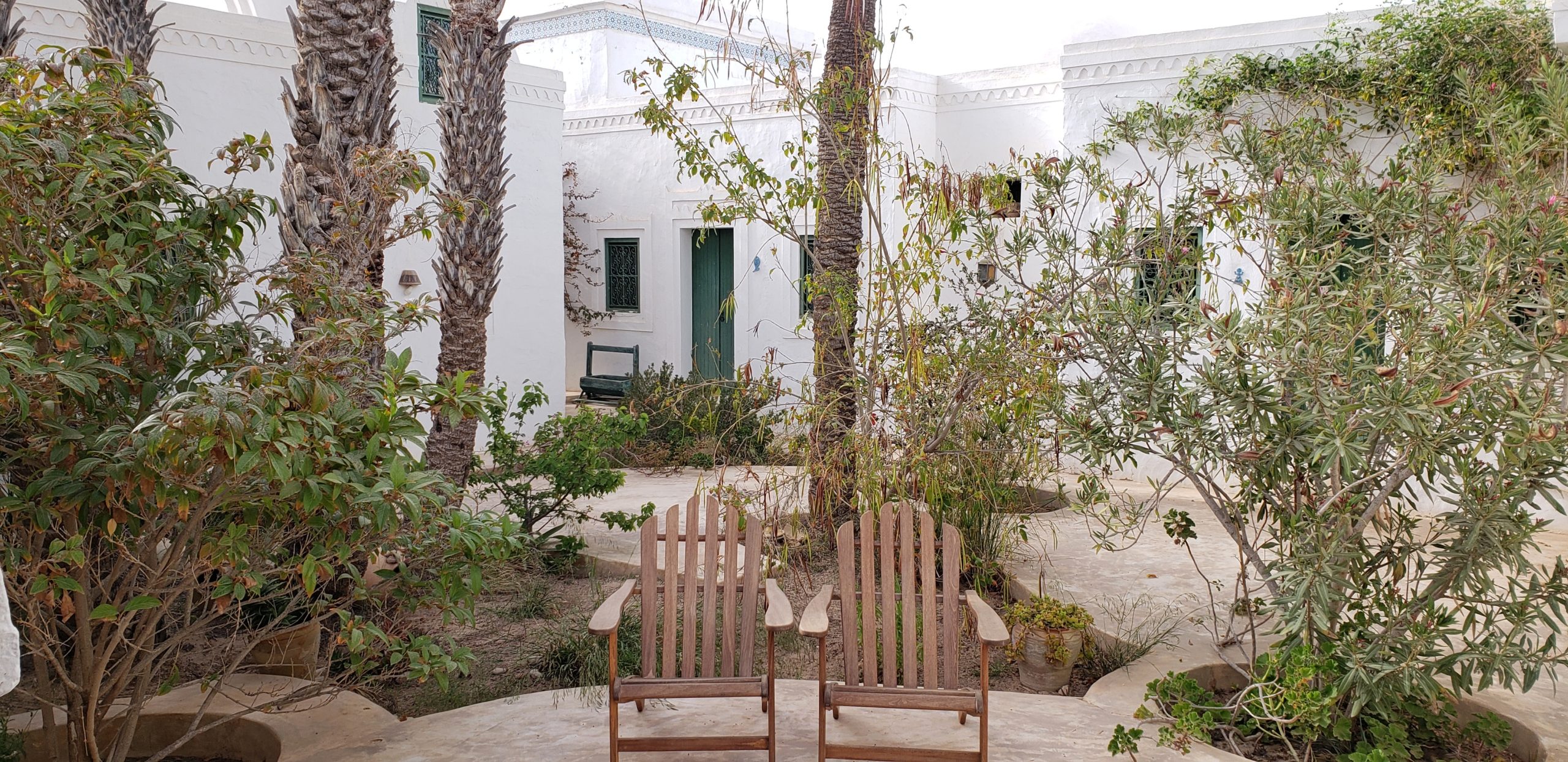
A central square in the old town of Houmt Souk, the island’s capital with surprisingly open lanes and a host of ancient mosques on its periphery.
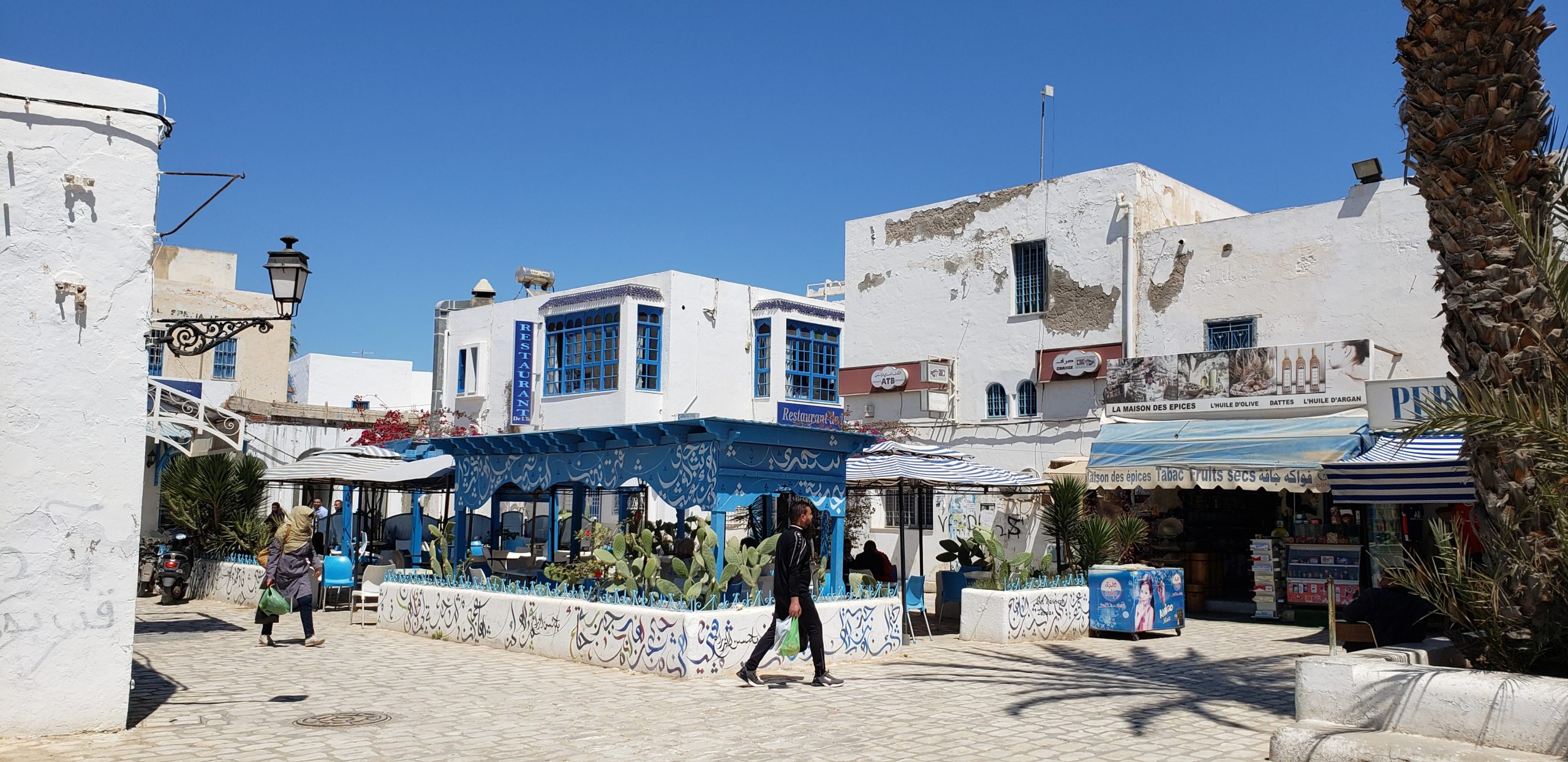
A peek back through a time tunnel in the oldest section of Houmt Souk, the capital. Eight old stone arches (yes, eight, count them!) form an unimportant, but very inviting, passageway.
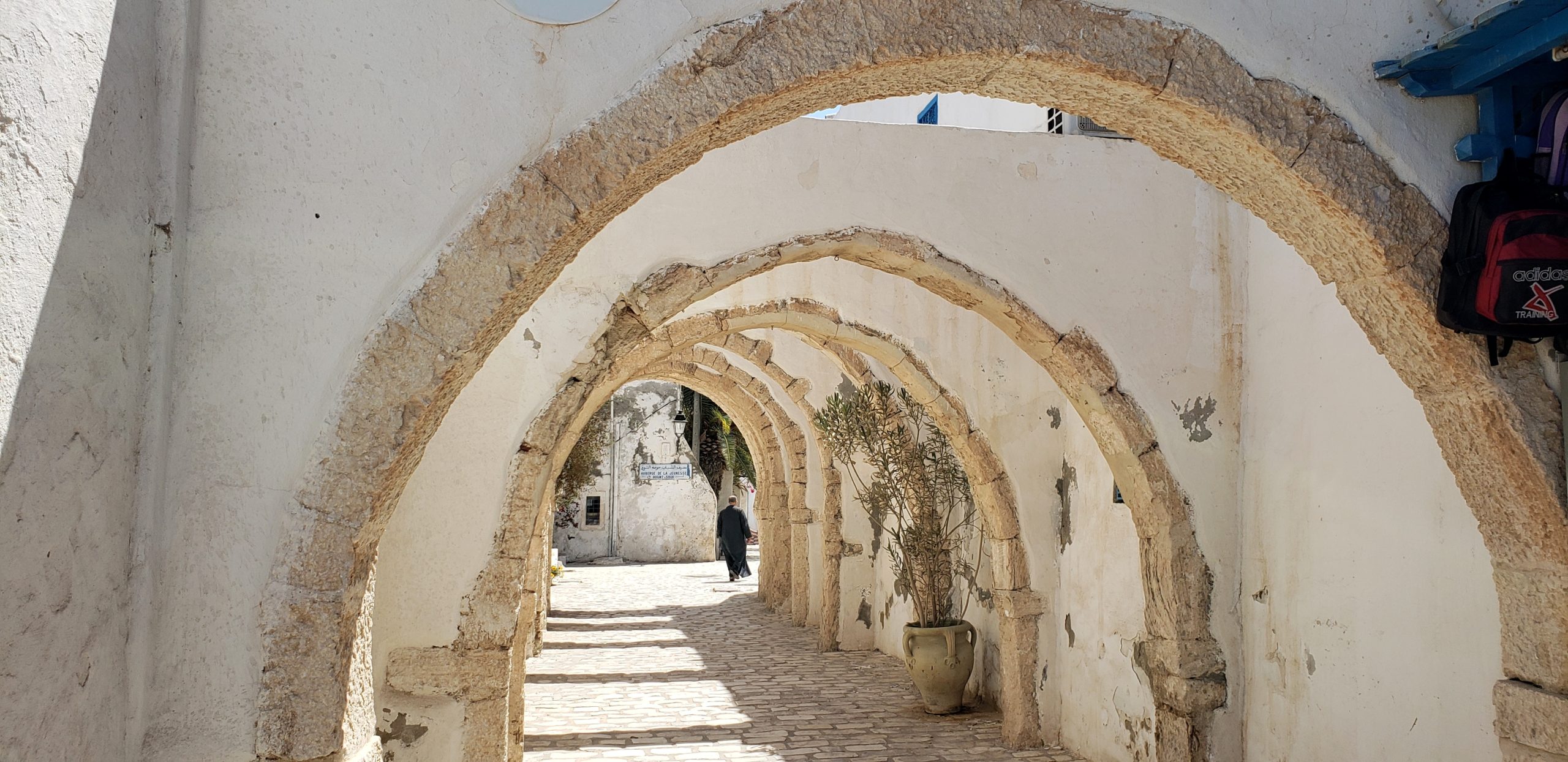
And we shared a more contemporary moment, as a group of students spread some joy by chanting as they headed down a Djerba street.
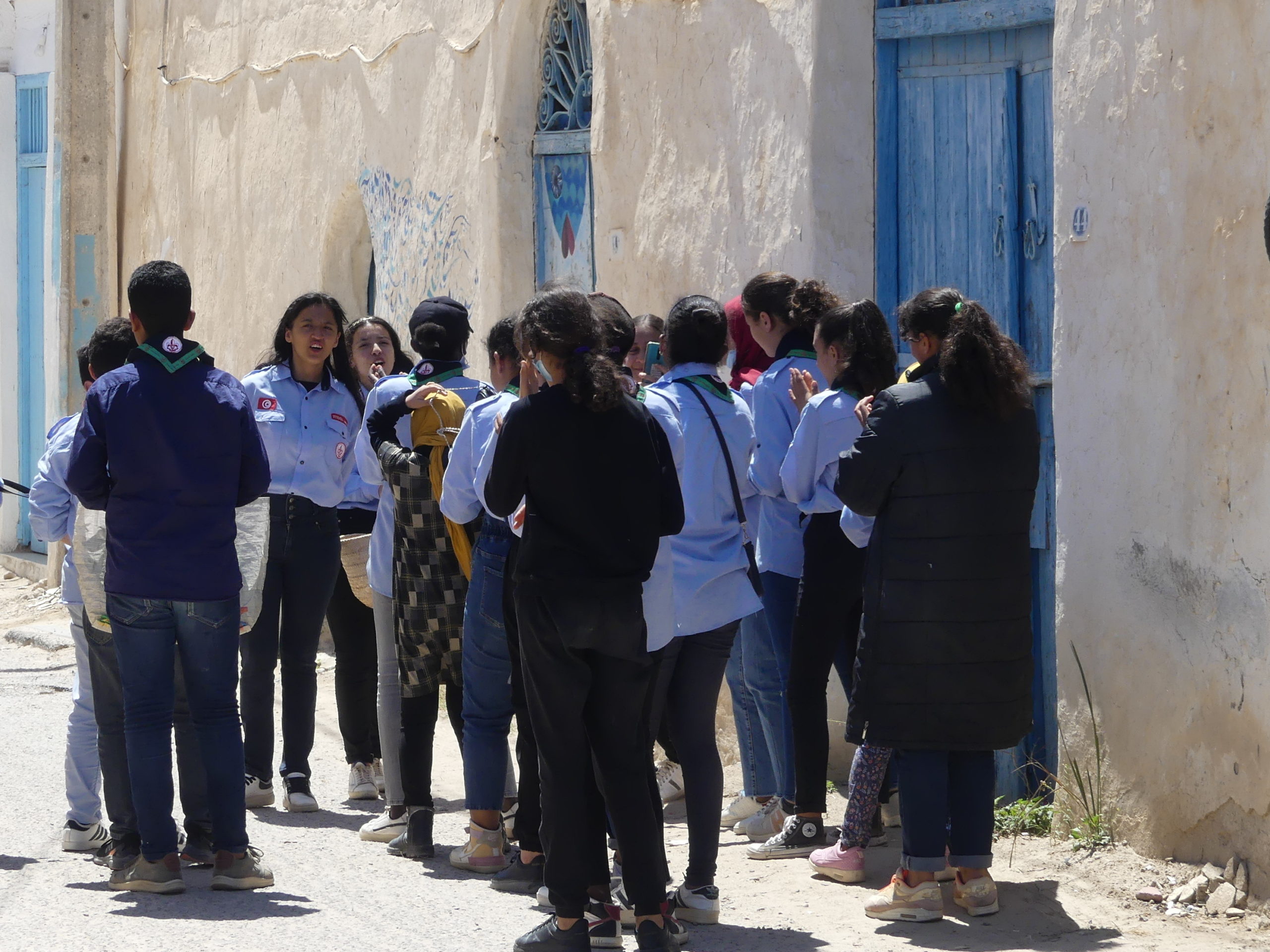
As if there wasn’t enough else on the island to busy us, we found another look back in time in this medieval fortress at the edge of the capital, guarding the bay of the long peninsula. Borj Ghazi Mustapha dates from 1289, built by Sicilian leader Roger de Loria upon a former Roman fortification. The current version dates from Spanish occupation in the 15th century, but soon was traded back and forth between Spanish naval forces and Turkish pirates, who found the island a convenient home base for their activities.
To the east of the fortress and the capital, an 8 kilometer (5 mile) peninsula juts into the Mediterranean at the north end of Djerba island. It’s a challenge to reach it via a dirt track and the beach offers no services, so we felt completely at peace walking for hours along its dune-fronted shoreline. In the foreground are some of the charming formations made by sand hardening into rock.
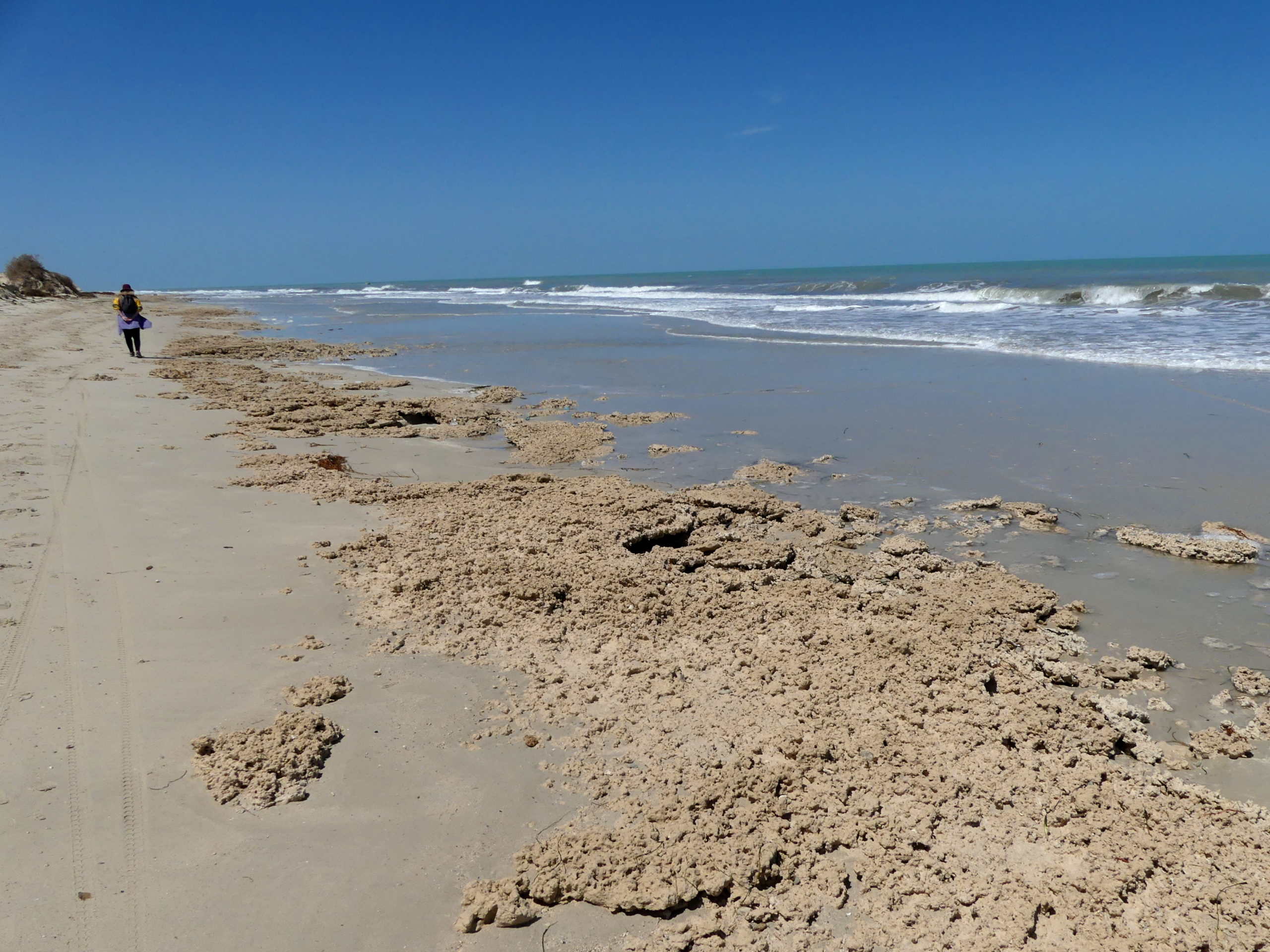
At the much more accessible large lagoon on the east of the island, we joined a gathering spot for birds like the godwit and spoonbill, as well as a group of local islanders strolling and frolicking.
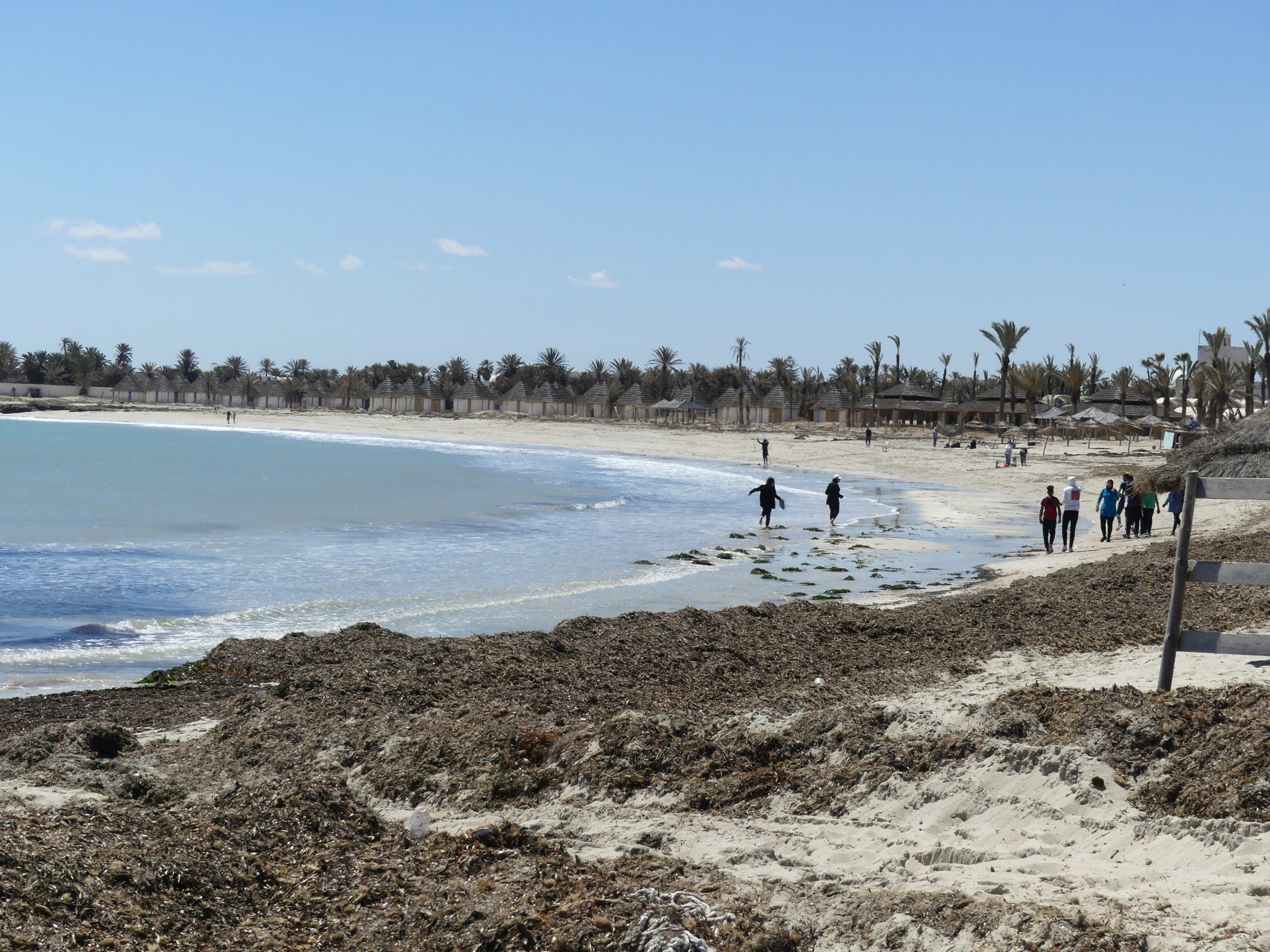
Intersecting Religions
A mosque in the typical Djerba style.
Ramadan kareem; chag sameach; Happy Easter! One one day during our stay, we reflected on how special it was for three religions. And we managed to visit holy sites where each holiday was celebrated on Djerba, a place which has connected Tunisia to the Western world and the Middle East for thousands of years.
We saw several mosques in the principal town of Houmet Souk where Muslims have lived since shortly after Mohammed. This first is in typical Djerba style, though called Turkish.
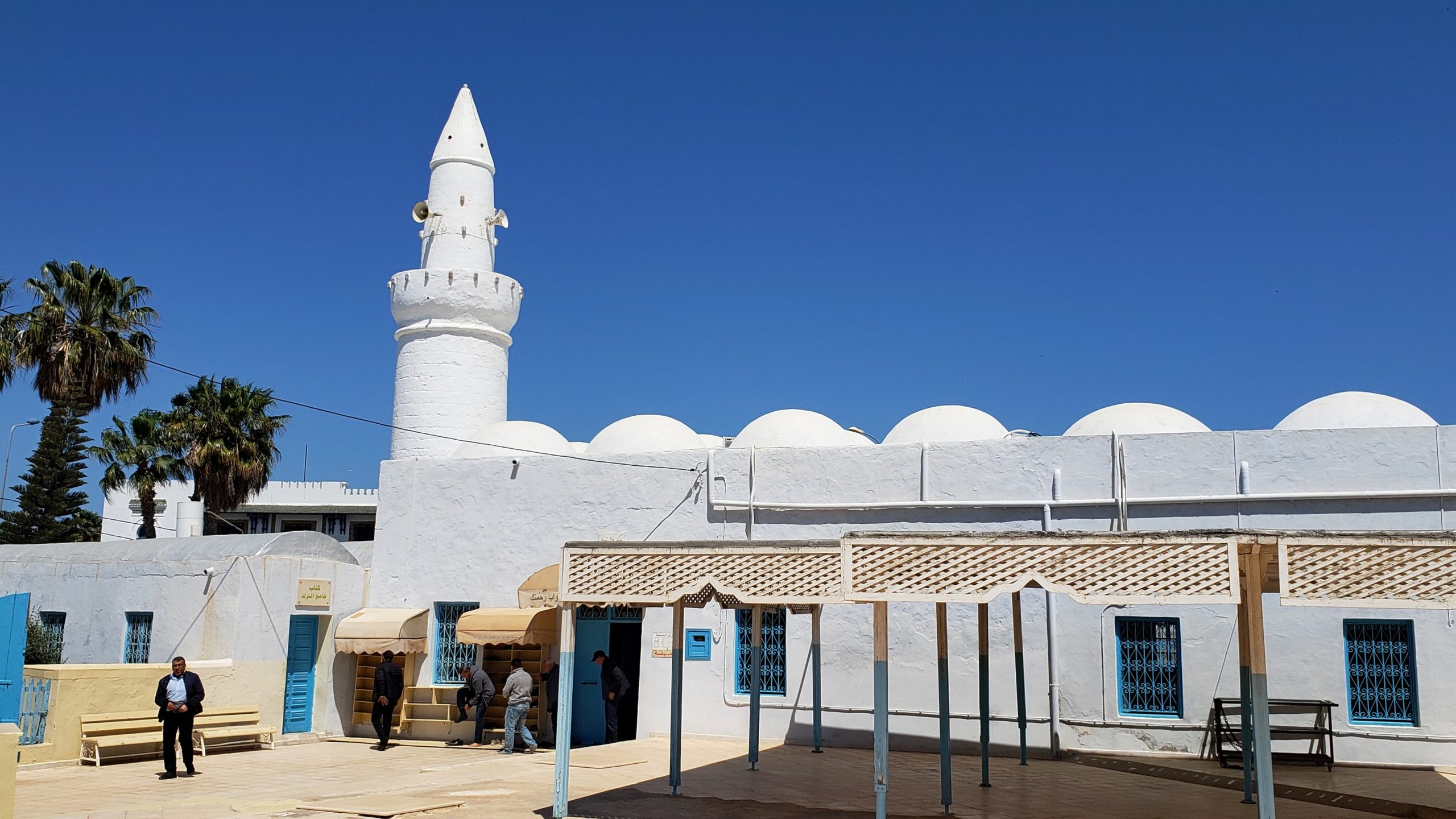
A 17th century mosque with its Muslim cemetery.
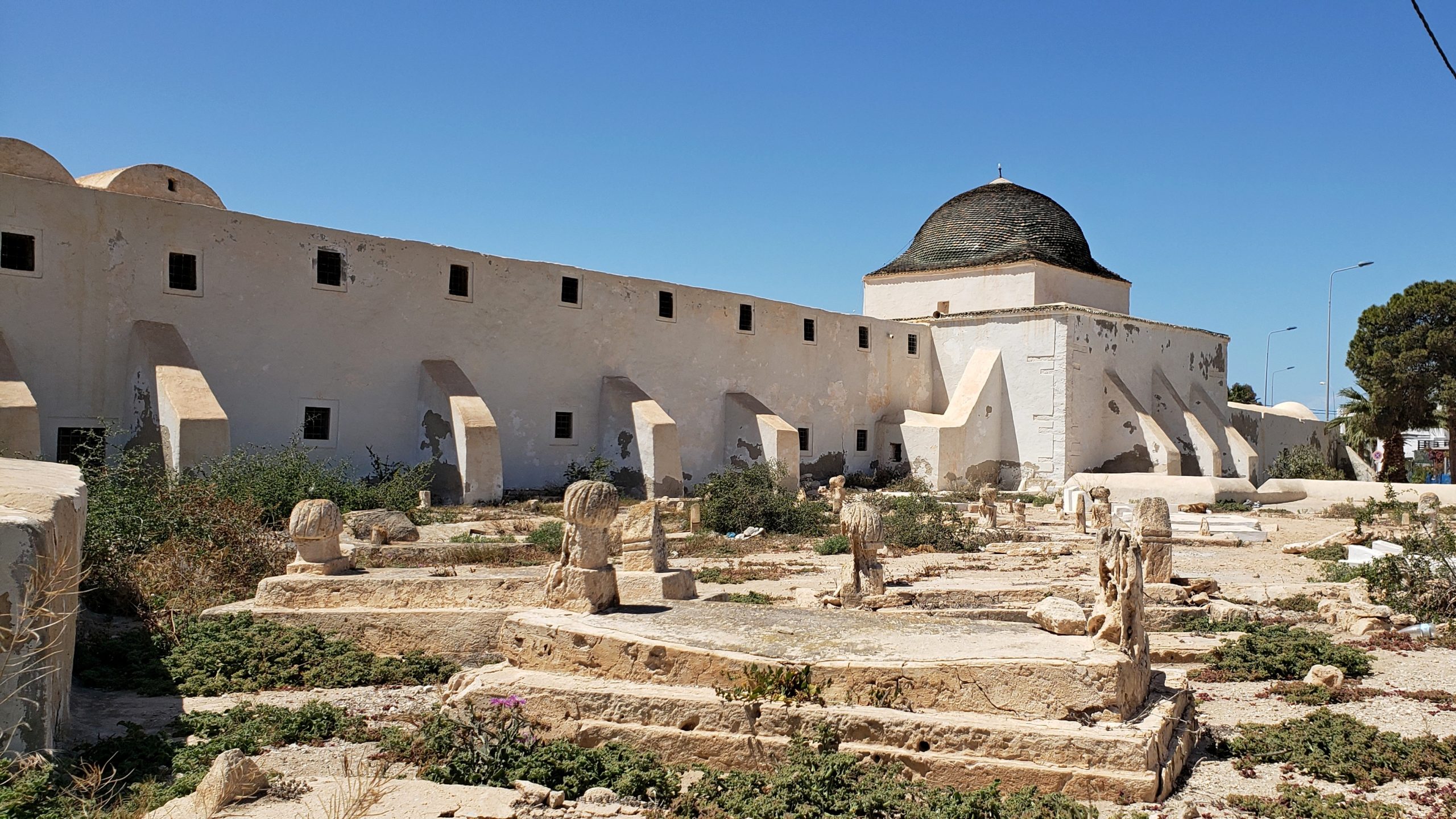
We saw a synagogue serving the Jewish population that began here after the diaspora from Spain in 1492 and once numbered 40,000. Here is its modern version.
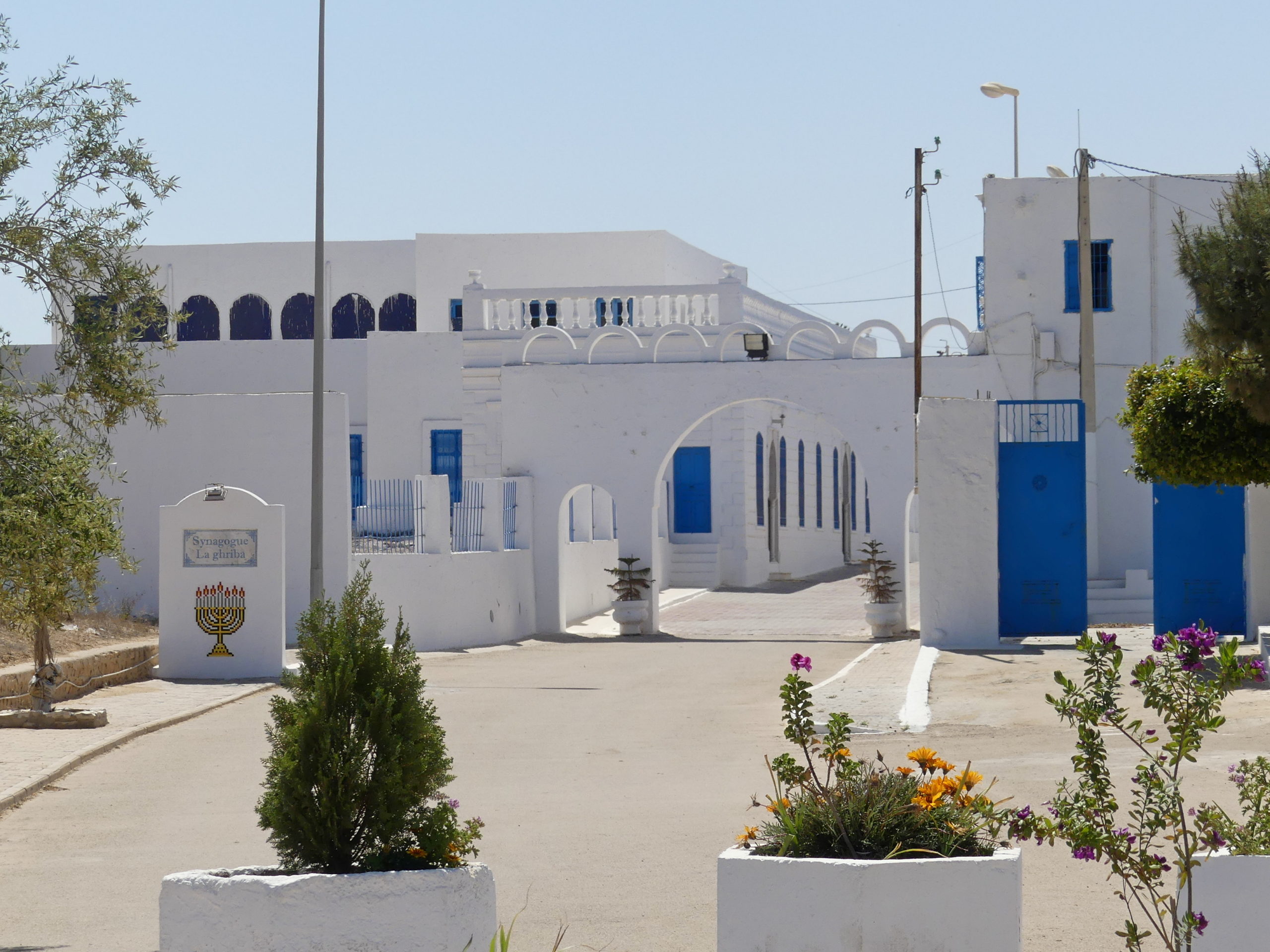
A street in the Jewish quarter of Djerba.
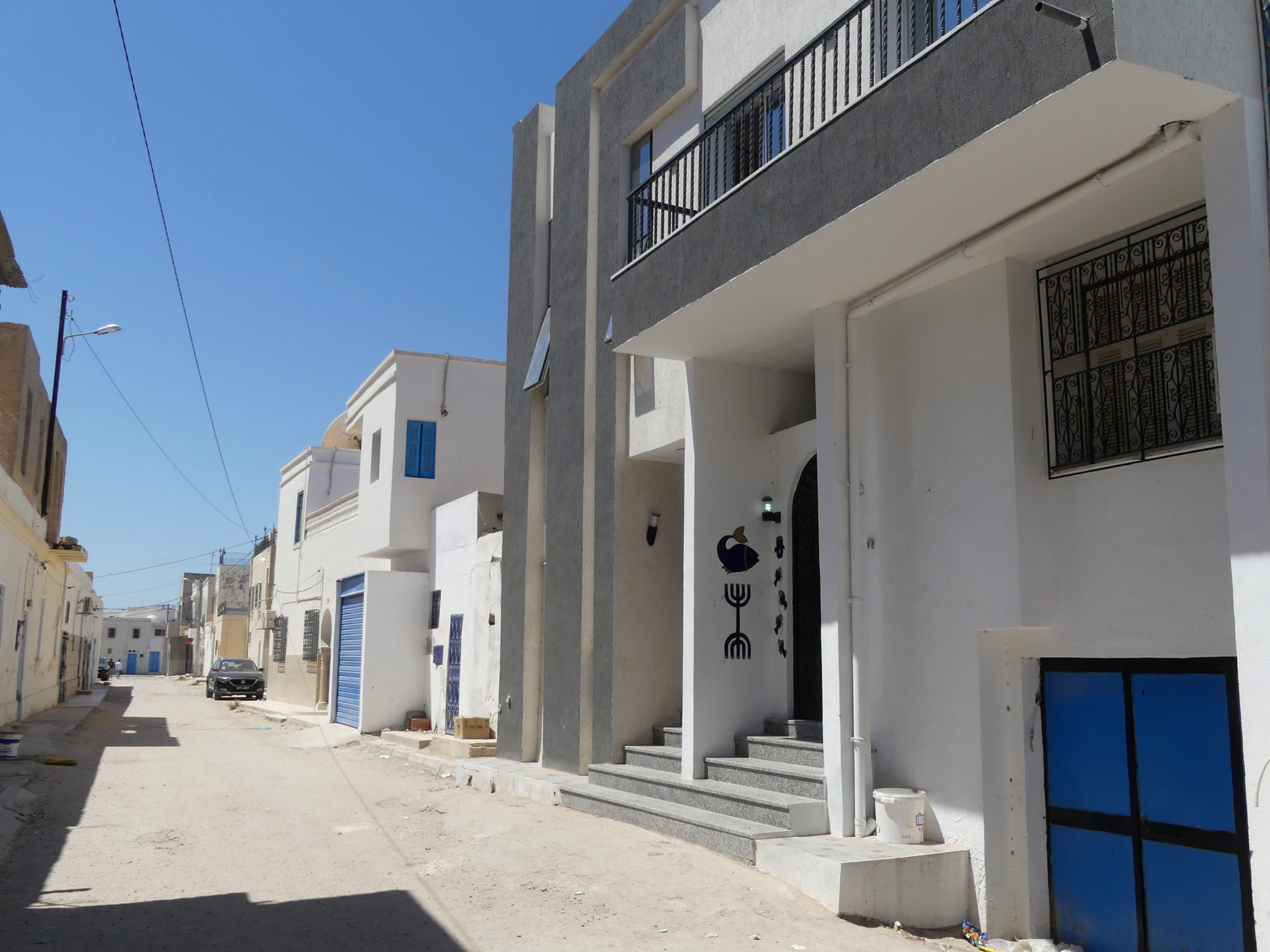
And we visited the 19th century neo-baroque Catholic Church which welcomed the Greek, Italian and Maltese sponge fishers, then the French colonialists, and still conducts services in the heart of the island.
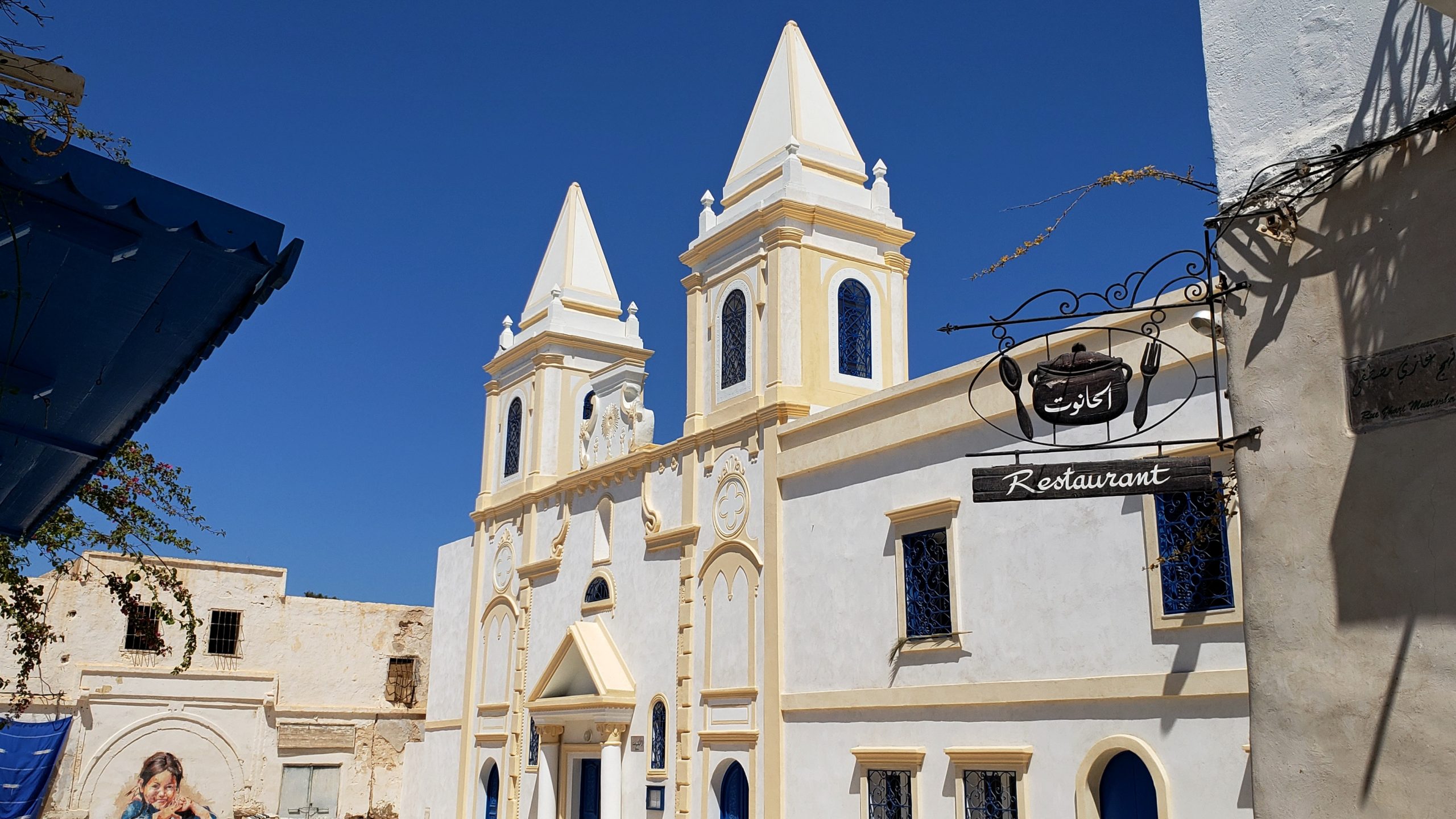
Intersecting Arts at the Museum
One other big surprise on the island was the Lalla Hadria Museum. We didn’t expect much there, partly because the museum is in an area better known for its beaches and lagoons. And partly because it shares a ticket with Crocod’iles, a man-made habitat for hundreds of African crocodiles (feeding at 11!). The museum is a treasure, however, with art from 1200 years old to the contemporary, drawn from across the Islamic world.
(For a very different kind of art experience on Djerba, see the post on Djerba Hood.)
Here are just a few of the items we loved at Lalla Hadria:
Phoenixes (symbols of eternity), Persian calligraphy, and floral decoration adorn this 13th century ceramic tile. But it’s the lustrous metallic coating that tingles the eye.
Another 13th century Persian piece is this bronze mirror with two fantastical chimeras in a perpetual dance. The text is a kind of wish for all the blessings of leadership, including power and glory…and happiness.
A 15th century bowl from Egypt or Syria, incised all over its surface with intricate geometric designs and elegant Arabic script.
An aristocratic Persian knight trots his nimble, high-stepping horse among a set of dogs and chickens on this ceramic bowl dating from the 10th or 11th century.
This necklace, fit for a regal bride’s wedding present, with delicate pearls in twin circlets amid the goldwork, is another example of modern Tunisian artistry.
These 19th century Tunisian storage boxes, likely used for wedding dowries, are painted with delightful geometric designs, seductive color and floral decoration. Above them, a striking tapestry from Tunisia illustrates what might have been stored within. It’s one of dozens of examples at the museum of weaving and tapestry from here.
Elaborately painted ceramic pots demonstrate the contemporary Nabeul style of Tunisian ceramicists. Nabeul is a town along the southern shore of the large Cap Bon peninsula below Tunis.
(To enlarge any picture above, click on it. Also, for more pictures from Tunisia, CLICK HERE to view the slideshow at the end of the itinerary page.)


